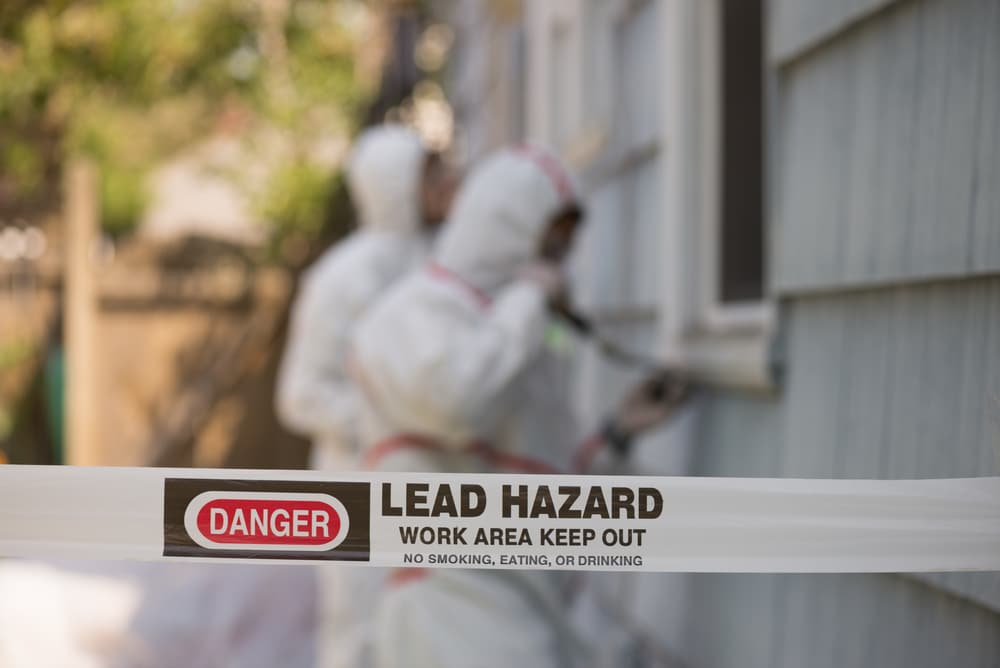When working at properties that could contain lead-based contaminants, workers need to take extra caution. Not only for the health of themselves and others, but also because of certain regulations from the Environmental Protection Agency (EPA).
Even common renovation and property maintenance activities such as sanding, cutting and demolition can disturb old lead-based paint at one of your properties. Found in a quarter of homes built before 1978 and nearly half built before 1960, lead-based paint can be harmful both in chip and dust form to children and adults. However, lead-based paint dust is the most dangerous because it is invisible and can be ingested unknowingly by both workers and residents.
Because of the tremendous hazard lead-based paint presents to peoples’ health, especially children, the EPA issued the Lead-Safe Renovation, Repair and Painting Program in 2008 (The Program). It requires anyone performing renovations or repairs that disturb lead-based paint in pre-1978 homes and child care or child-occupied facilities to follow safety guidelines, and it has three important parts.
Work Practices to Ensure Safety
The Program requires anyone performing renovation, repair and painting projects in pre-1978 homes to follow lead-safe work practices, which include containing the work area, minimizing dust and a thorough work site cleanup.
The Program prohibits the following practices in the specified pre-1978 facilities because they would exacerbate the disturbance of lead-based paint:
- Open flame burning
- Using heat guns at greater than 1,100° F
- Use of power tools without high-efficiency particulate air (HEPA) exhaust control
Required Educational Materials
The Program requires you, as the building owner that planned on disturbing lead-based paint, to provide the occupants of the building with educational material.
This material is in the form of a lead hazard informational pamphlet called Renovate Right: Important Lead Hazard Information for Families, Child Care Providers and Schools, which is available at www.epa.gov. This pamphlet must be distributed before renovation work begins, and people with no control of repairs/renovations in their facility, including rental tenants or parents of children at a child-occupied facility, must sign a pre-renovation form (also found at www.epa.gov) to ensure that they were informed of the work being done, the risks associated with it and how they can stay safe.
Certification and Training
The Program requires all organizations that perform renovation, repair or painting work on a pre-1978 home or child-occupied facility become certified. To achieve certification, the firm must apply with the EPA, or to the state if there is an EPA-authorized state renovation program, and pay a fee.
Once the organization is certified by registering with the EPA, then a member of the organization can take an EPA or state training course to become a Certified Renovator. To find a provider who teaches the proper Lead Abatement course in your area, call the National Lead Information Center at 1.800.424.5323. In projects where lead-based paint is disturbed, there must be one or more Certified Renovators assigned to the job. Both the organization and Certified Renovator certifications are valid for five years. All renovation workers involved with the lead-based paint job must be trained as well, but they can be trained on the job by the Certified Renovator to observe safe lead work practices. Organizations working in these situations are required by the Program to keep records demonstrating the lead-safe work practices used on the job, and the EPA has developed a recordkeeping checklist to help renovators with compliance. The checklist can be found on the EPA’s website.
Exceptions
All these requirements apply only to paid renovators who work in pre-1978 housing of child-occupied facilities and include renovation contractors, lessors, maintenance workers in multi-family housing and painters or other specialty trades. The EPA defines child-occupied facilities as residential, public or commercial buildings where children under age 6 are present on a regular basis. However, there are several exceptions to the Program where certain kinds of property are not included.
In the following situations, occupants do not need to be given the Renovate Right material and renovators working in these capacities do not need to be lead-certified by the EPA:
- Renovations occurring on housing for the elderly or disabled, unless children under the age of 6 also live in these residences
- Renovations on zero-bedroom dwellings such as studio apartments or dormitories
- Renovations on housing that is pre-1978 but has been accurately tested and confirmed by inspection to be lead-free
- Emergency renovations or repairs
- Minor repairs, which are classified as disturbing less than 6 square feet of paint on inside surface or less than 20 square feet of paint on outside surface. The EPA does not classify window replacement as a minor repair.
- Homeowners performing renovation, repair or painting work in their own homes
One important note is about homeowners performing renovations/repairs to their own homes but who rent part of the home or building out to tenants. If you receive rent, it is considered compensational pay and you are required to become certified and provide informational materials in accordance with the EPAs requirements for paid renovators.
For more information, contact us below, and follow us on LinkedIn for more industry news and tips.

